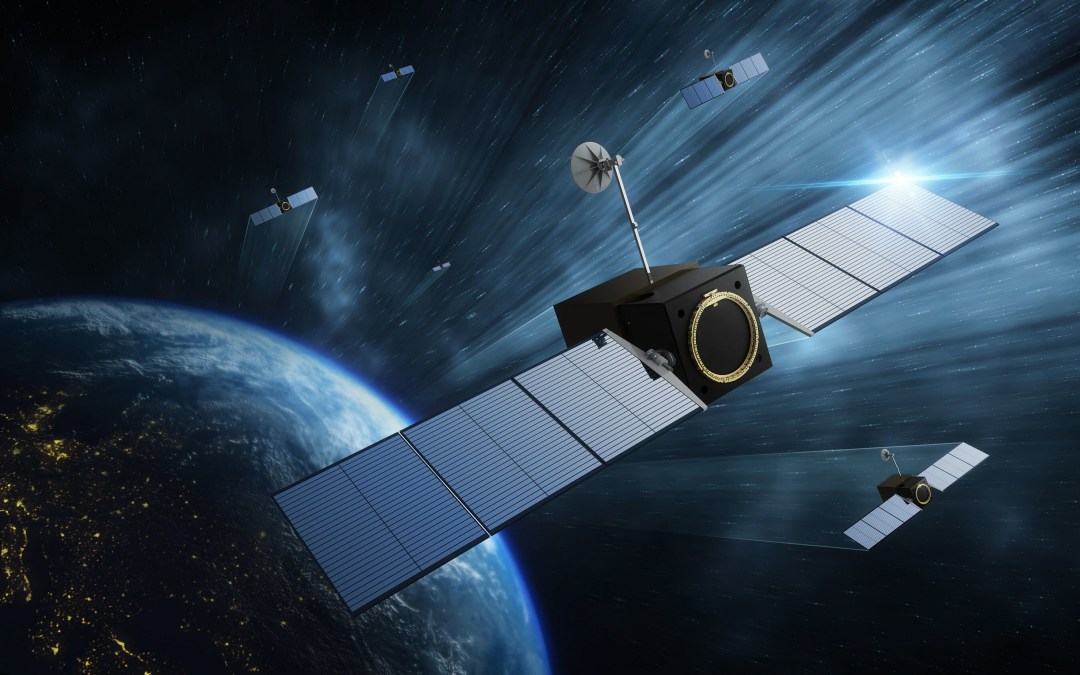New DOD strategy looks to remove barriers for using commercial space capabilities in military ops

After years of asserting that it wants to leverage advancements in commercial space technology, the Pentagon has released a new strategy that aims to lower any barriers that prevent the department from integrating commercial capabilities into military operations.
The Department of Defense on Tuesday published its first-ever Commercial Space Integration Strategy, which calls on the department to develop mechanisms — including contracts and other agreements — that will allow for commercial-built space solutions to be used for some operations. The strategy also addresses financial and security risks that commercial companies may face when supporting the Pentagon, and potentially opens the door for the department to provide financial and military protections if necessary.
“This integration will help maintain our technological edge, deny adversaries the benefit of attacks against national security space systems, and contribute to a safe, secure, stable and sustainable space domain,” the strategy states. “This DoD Commercial Space Integration Strategy provides strategic guidance to the Department to ensure it can fully seize the available opportunities to work with commercial entities to achieve these ends.”
Leaders across the Pentagon have sought to take advantage of recent innovations in the commercial space sector, which has experienced exponential growth in technology advancements and capital in recent years. Assistant Secretary for Space Policy John Plumb emphasized that because of the fast pace at which companies can innovate, the department must remove legacy structural, procedural and cultural barriers to integrate commercial technology.
“The degree to which commercial space capabilities and services can benefit U.S. national security will ultimately be measured by how well the department can actually integrate commercial solutions into the way we operate — not just in peacetime, but in conflict,” Plumb said Tuesday during a press briefing at the Pentagon.
The document that was rolled out is a separate effort from the Space Force’s upcoming commercial space strategy that is expected to be released in the coming weeks. Plumb told reporters that while his office and the Space Force worked in collaboration on their respective strategies, the Pentagon’s is intended to create policy and structural guidelines for the entire department.
The document outlines four broad priorities that the DOD will focus on to integrate commercial solutions into military operations: ensuring access to commercial solutions at all stages of conflict, achieving integration prior to crisis, establishing security conditions that promote integration, and supporting the development of new commercial space solutions.
For the first priority, the Pentagon is looking to ensure that commercial space capabilities are available to the department whenever they are needed — including the ability to surge commercial capacity in order to meet military requirements in all phases of conflict.
To do so, the department plans to leverage “new contracts and other agreements as the formal mechanisms to ensure access to commercial solutions across the spectrum of conflict and mission areas,” the strategy states.
The contracts will also include cyber, data and supply chain security requirements that commercial companies will need to meet in order to work with the military. The strategy also indicates that the “contracts will enable prioritization of Department requirements and capability needs over other commercial clients in specific situations” if necessary.
Another priority outlined in the strategy looks to mitigate fiscal and security risks that may impede companies from working with the department through three lines of effort: promoting norms and standards, increasing threat information-sharing and offering financial protection.
On possible monetary incentives, the document notes that U.S. government-provided insurance currently available for commercial companies working with the air and maritime military domains are not yet available for the space sector.
Therefore, “the Department will evaluate gaps in protection from commercial insurance providers, the conditions under which U.S. Government-provided insurance would be needed for the space domain, and whether those conditions have been met,” the strategy states.
The guidance also notes that military forces could be directed to protect and defend commercial assets that are contracted with the military, but does not offer any specifics for what actions would prompt the military to step in, nor what those protections would look like. During the press briefing Tuesday, Plumb would not elaborate on any “hypothetical red lines” that the Defense Department has.
As for the remaining priorities outlined in the strategy, the Pentagon is aiming to achieve integration with commercial capabilities during peacetime. It calls for commercial space solutions to be used in wargames, tabletop exercises and training exercises to test and validate the technology, as well as develop new tactics and concepts of operations.
Lastly, the department is committed to supporting the commercial sector in developing capabilities that can be used by the military through “available financial, contractual and policy tools to rapidly field and scale commercial technology, attract private investment and commercial lenders, assist in clearing regulatory hurdles where national security imperatives are present, and ultimately bring new commercial solutions to the warfighter at speed.”
The Pentagon also listed 13 national security space mission areas critical to military operations that are divided into three categories based on the level at which they leverage commercial capabilities. The strategy notes that the department will routinely evaluate these mission areas and whether or not they can move across categories over time.
Only one mission area is listed under primary commercial space: space access, mobility and logistics, which covers launch capabilities, as well as satellite refueling and maintenance.
Some mission areas could be considered hybrid mission areas, or those that could be performed by the government in some instances and the commercial sector in others. Those include cyberspace operations; satellite communications; spacecraft operations; intelligence, surveillance and reconnaissance; space domain awareness; and environmental monitoring.
Government primary mission areas indicate operations that aren’t likely to be performed by commercial companies, and includes combat power projection; command and control, including nuclear C2; electronic warfare; nuclear detonation detection; missile warning; and positioning, navigation and timing.



